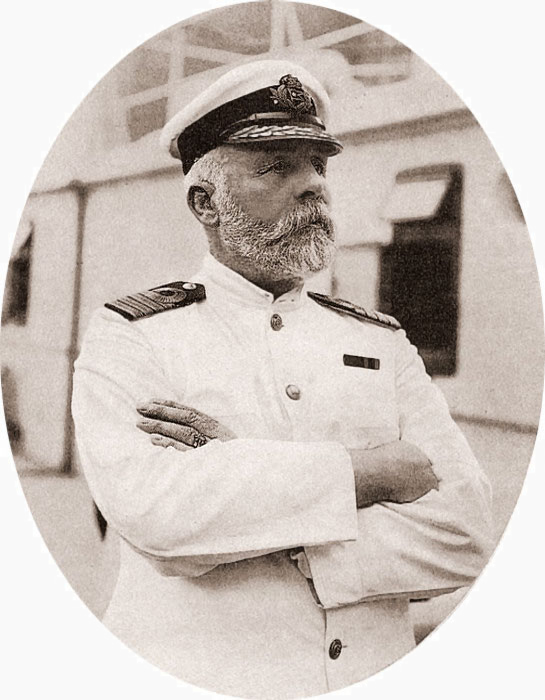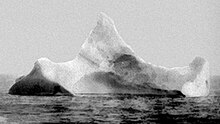Sea trials
Titanic's sea trials took place shortly after she was fitted out at Harland & Wolff shipyard. The trials were originally scheduled for 10.00am on Monday, 1 April, just nine days before she was due to leave Southampton on her maiden voyage, but poor weather conditions forced the trials to be postponed until the following day.Aboard Titanic were 78 stokers, greasers and firemen, and 41 members of crew. No domestic staff appear to have been aboard. Representatives of various companies travelled on Titanic's sea trials, including Harold A. Sanderson of I.M.M and Thomas Andrews and Edward Wilding of Harland and Wolff. Bruce Ismay and Lord Pirrie were too ill to attend. Jack Phillips and Harold Bride served as radio operators, and performed fine-tuning of the Marconi equipment. Mr Carruthers, a surveyor from the Board of Trade, was also present to see that everything worked, and that the ship was fit to carry passengers. After the trial, he signed an 'Agreement and Account of Voyages and Crew', valid for twelve months, which deemed the ship sea-worthy.
Maiden voyage

Titanic on her way after the near-collision with SS New York. On the left can be seen Oceanic and New York.
John Coffey, a 23-year-old stoker, jumped ship at Queenstown by stowing away on a tender and hiding amongst mailbags destined for the shore. A native of the town, he had probably joined the ship with this intention, but afterwards he said that the reason he had smuggled himself off the liner was that he held a foreboding about the voyage. He later signed on to join the crew of Mauretania.

Captain Edward J. Smith, captain of Titanic
Sinking
Main article: Timeline of the sinking of RMS Titanic
Further information: Ship floodability
On the night of Sunday, 14 April 1912, the temperature had dropped to near freezing and the ocean was calm. The moon was not visible (being two days before new moon), and the sky was clear. Captain Smith, in response to iceberg warnings received via wireless over the preceding few days, had drawn up a new course which took the ship slightly further southward. That Sunday at 13:45, a message from the steamer Amerika warned that large icebergs lay in Titanic's path, but as Jack Phillips and Harold Bride, the Marconi wireless radio operators, were employed by Marconi and paid to relay messages to and from the passengers, they were not focused on relaying such "non-essential" ice messages to the bridge. Later that evening, another report of numerous large icebergs, this time from Mesaba, also failed to reach the bridge.At 23:40, while sailing about 400 miles (640 km) south of the Grand Banks of Newfoundland, lookouts Fredrick Fleet and Reginald Lee spotted a large iceberg directly ahead of the ship. Fleet sounded the ship's bell three times and telephoned the bridge exclaiming, "Iceberg, right ahead!". First Officer Murdoch gave the order "hard-a-starboard", using the traditional tiller order for an abrupt turn to port (left), and adjusted the engines (he either ordered through the telegraph for "full reverse" or "stop" on the engines; survivor testimony on this conflicts). The iceberg brushed the ship's starboard side (right side), buckling the hull in several places and popping out rivets below the waterline over a length of 299 feet (90 m). As seawater filled the forward compartments, the watertight doors shut. However, while the ship could barely stay afloat with the foremost four compartments flooded, the foremost six were filling with water. The water-filled compartments weighed down the ship's bow, allowing much water to flood the vessel, accelerated by secondary flooding as regular openings in the ship's hull became submerged. Additionally, about 130 minutes after the collision, water started pouring from the sixth into the seventh compartment over the top of the bulkhead in between. Captain Smith, alerted by the jolt of the impact, arrived on the bridge and ordered a full stop. Shortly after midnight on 15 April, following an inspection by the ship's officers and Thomas Andrews, the lifeboats were ordered to be readied and a distress call was sent out.

Photograph of an iceberg in the vicinity of RMS Titanic's sinking taken on 15 April 1912 by the chief steward of the liner Prinz Adalbert who stated the berg had red anti-fouling paint of the kind found on the hull from below Titanic's waterline.
From the bridge, the lights of a nearby ship could be seen off the port side. The identity of this ship remains a mystery but there have been theories suggesting that it was probably either SS Californian or a sealer called Samson. As it was not responding to wireless, Fourth Officer Boxhall and Quartermaster Rowe attempted signalling the ship with a Morse lamp and later with distress rockets, but the ship never appeared to respond. Californian, which was nearby and stopped for the night because of ice, also saw lights in the distance. Californian's wireless was turned off, and the wireless operator had gone to bed for the night. Just before he went to bed at around 23:00, Californian's radio operator attempted to warn Titanic that there was ice ahead, but he was cut off by an exhausted Jack Phillips, who had fired back an angry response, "Shut up, shut up, I am busy; I am working Cape Race", referring to the Newfoundland wireless station. When Californian's officers first saw the ship, they tried signalling her with their Morse lamp, but also never appeared to receive a response. Later, they noticed Titanic's distress signals over the lights and informed Captain Stanley Lord. Even though there was much discussion about the mysterious ship, which to the officers on duty appeared to be moving away, the master of Californian did not wake her wireless operator until morning.
Lifeboats launched

Sinking of the Titanic by Henry Reuterdahl, drawn based on radio descriptions.
Titanic was given ample stability and sank with only a few degrees list, the design being such that there was very little risk of unequal flooding and possible capsize. Furthermore the electric power plant was operated by the ship's engineers until the end. Hence Titanic showed no outward signs of being in imminent danger, and passengers were reluctant to leave the apparent safety of the ship to board small lifeboats. Large numbers of Third Class passengers were unable to reach the lifeboat deck through unfamiliar parts of the ship and past barriers, although some stewards such as William Denton Cox successfully led some groups from Third Class to the lifeboats. As a result, most of the boats were launched partially empty; one boat meant to hold 40 people left Titanic with only 12 people on board. With "Women and children first" the imperative for loading lifeboats, Second Officer Lightoller, who was loading boats on the port side, allowed men to board only if oarsmen were needed, even if there was room. First Officer Murdoch, who was loading boats on the starboard side, let men on board if women were absent. As the ship's list increased people started to become nervous, and some lifeboats began leaving fully loaded. By 02:05, the entire bow was under water, and all the lifeboats, except for two, had been launched.
Final minutes
Around 02:10, the stern rose out of the water exposing the propellers, and by 02:17 the waterline had reached the boat deck. The last two lifeboats floated off the deck, collapsible B upside down, collapsible A half-filled with water after the supports for its canvas sides were broken in the fall from the roof of the officers' quarters. Shortly afterward, the forward funnel collapsed, crushing part of the bridge and people in the water. On deck, people were scrambling towards the stern or jumping overboard in hopes of reaching a lifeboat. The ship's stern slowly rose into the air, and everything unsecured crashed towards the water. While the stern rose, the electrical system finally failed and the lights went out. Shortly afterward, the stress on the hull caused Titanic to break apart between the last two funnels, and the bow went completely under. The stern righted itself slightly and then rose vertically. After a few moments, at 02:20, it also sank.Only two of the 18 launched lifeboats rescued people after the ship sank. Lifeboat 4 was close by and picked up five people, two of whom later died. Close to an hour later, lifeboat 14 went back and rescued four people, one of whom died afterward. Other people managed to climb onto the lifeboats that floated off the deck. There were some arguments in some of the other lifeboats about going back, but many survivors were afraid of being swamped by people trying to climb into the lifeboat or being pulled down by the suction from the sinking Titanic, though it turned out that there had been very little suction.
As the ship fell into the depths, the two sections behaved very differently. The streamlined bow planed off approximately 2,000 feet (609 m) below the surface and slowed somewhat, landing relatively gently. The stern plunged violently to the ocean floor, the hull being torn apart along the way from massive implosions caused by compression of the air still trapped inside. The stern smashed into the bottom at considerable speed, grinding the hull deep into the silt.
After steaming at 17.5 knots (32.4 km/h) for just under four hours, RMS Carpathia arrived in the area and at 04:10 began rescuing survivors. By 08:30 she picked up the last lifeboat with survivors and left the area at 08:50 bound for New York


0 comments:
Post a Comment